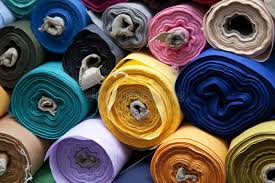Have you ever stopped to think about the intricate world of fabrics that surround us every day? From the clothes we wear to the furniture we sit on, fabrics play a crucial role in our lives. Let's delve into the fascinating science behind fabrics.
What are Fabrics Made of?
Fabrics are made from fibres, which can be natural, synthetic, or a blend of both. Natural fibres, such as cotton, wool, and silk, come from plants or animals. Synthetic fibres, like polyester and nylon, are man-made through chemical processes. Blended fabrics combine both natural and synthetic fibres to create unique properties.
How are Fabrics Produced?
The production of fabrics involves spinning fibres into yarn, which is then woven or knitted to create the final fabric. Different weaving and knitting techniques result in various textures and patterns. Additionally, fabrics can undergo treatments like dyeing, printing, or finishing to enhance their appearance and performance.
What Determines Fabric Quality?
Fabric quality is determined by factors like fibre type, yarn size, weave or knit structure, and finishing processes. The thread count, or the number of threads per square inch, also affects the fabric's feel and durability. Higher thread counts often indicate a smoother and more luxurious fabric.
Why Do Fabrics Feel Different?
The way a fabric feels against the skin is influenced by its texture, weight, and breathability. Fabrics like silk are smooth and lightweight, while wool is soft and insulating. Breathable fabrics, such as cotton and linen, allow air to circulate, making them ideal for warm weather.
How Do Fabrics Differ in Performance?
Fabrics vary in performance based on their properties. For example, moisture-wicking fabrics like polyester are excellent for activewear as they draw sweat away from the skin. Water-resistant fabrics like nylon repel water, making them suitable for outdoor gear. Understanding fabric
